Saul Lake Bog Plant Information
The following is a listing of plants commonly found at Saul Lake Bog the focus is the wetland plants near the boardwalks in the bog. Elsewhere in the nature area are some swamp, grassland and forest species.
Saul Lake Bog Nature Preserve is managed by the Land Conservancy of West Michigan.
Plants are organized by growth form and phylogenetic grouping as follows:
|
Herbaceous |
|---|
|
Fern |
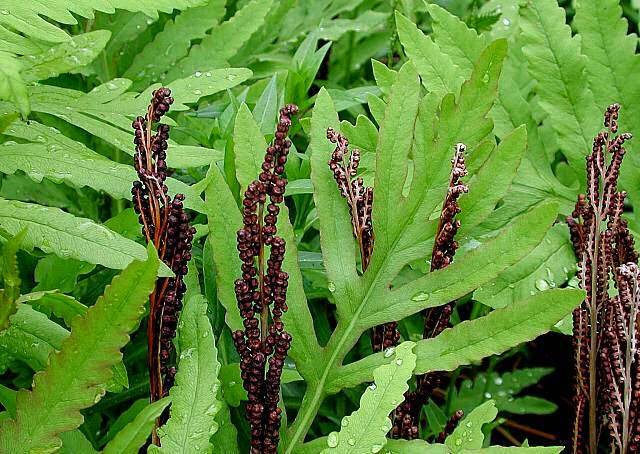
Onoclea (sensibilis) – sensitive fern
Dryopterid-aceae
Medium fern; leaves upright with petioles roughly same length as blades; sterile leaves deciduous and surrounding fertile leaves, once pinnately divided at base, opposite, deeply cleft upward wavy margined or coarsely toothed, ֎with a winged central axis; ֎dimorphic fronds (fertile and sterile leaves appearing distinctly different); fertile leaves contain spore clusters produced in summer and overwinter, leaves divided in beadlike pinnules with in rolled margins covering the sori; sori round and covered by indusia; swampy woods, wet shores, wet meadow margins.
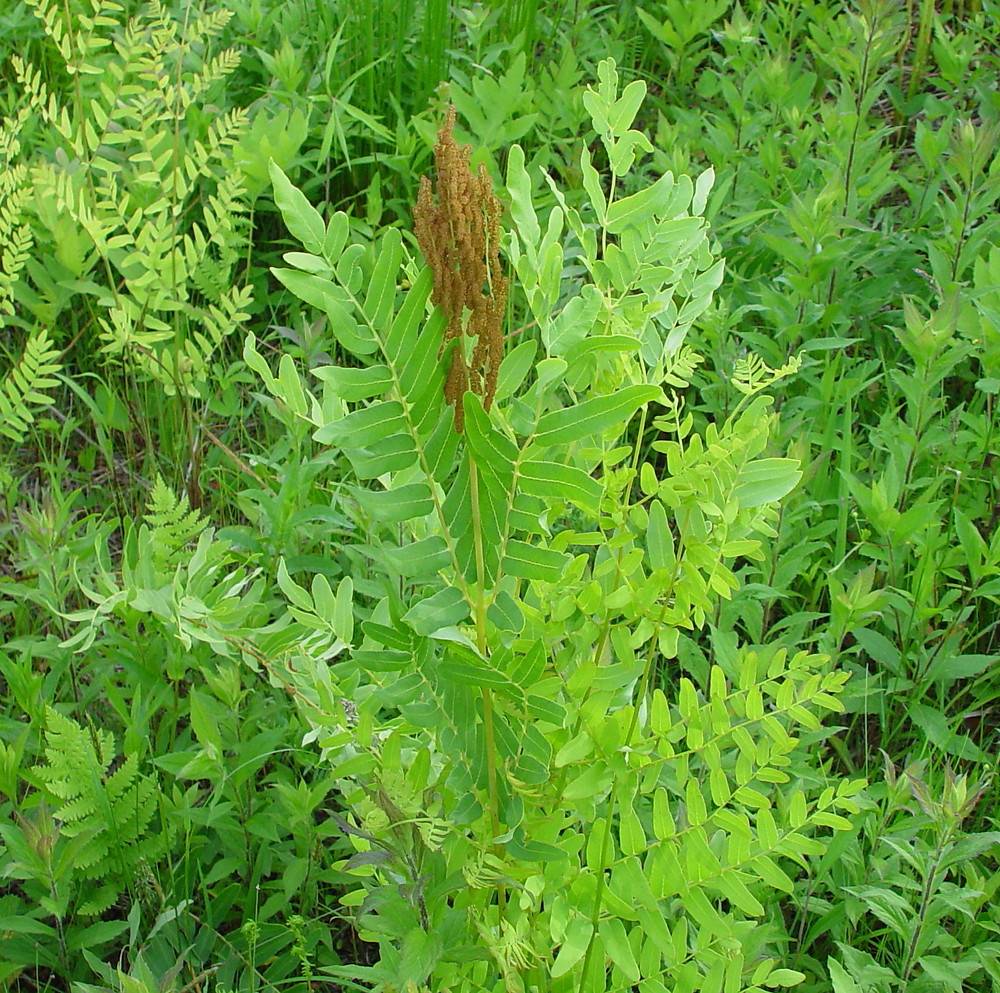
Osmunda regalis - royal fern
Osmund-aceae
Large fern; fronds dimorphic; ֎all fronds bipinnate, ֎large and semi-coarse, oblong, ovate; leaflets not opposite, 6 or more pairs; stipe (frond axis) smooth or glabrous, some fronds sterile, some ֎with fertile pinnae at their tips with pinnae smaller; bogs, lake fronts, stream-banks, meadows.
Dicot (Herbaceous)
[1625766381].jpg)
Cicuta sp. – water hemlock
Api-aceae (֎double umbel ֎typically hollow ֎typically toxic ֎often with sheath)
Medium to large herb up to 2m; highly poisonous, handle with caution; from tuberous rootstalk; leaves alternate, ֎2-3 pinnate; leaflets narrow or lanceolate; flowers white or green; fruit round or ovate with pronounced ribs, June-September; wet meadows, marshes, moist soils.
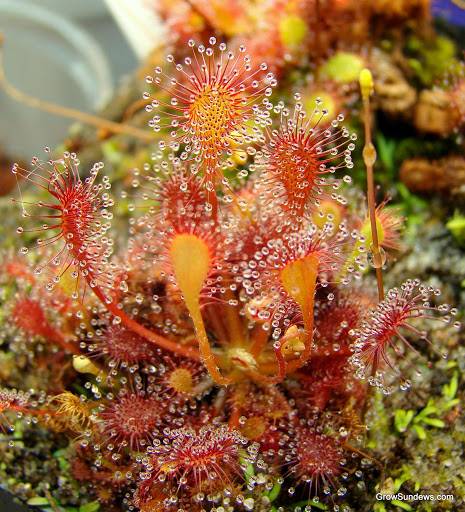
Drosera rotundifolia – round-leaved sundew
Droser-aceae
Small carnivorous herb; leaves small, round, in a rosette, each on a slender stalk ֎covered with reddish glandular hairs (or tentacles) that exude a sticky juice, like tiny dewdrops that trap insects; flowers pink or white in a one-sided cluster, open one at a time; acid or peaty bogs.
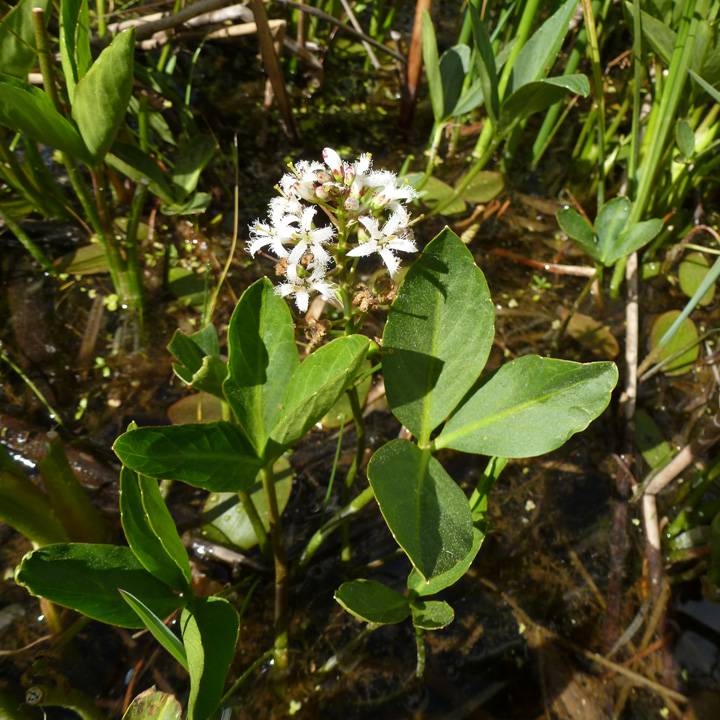
Menyanthes trifoliata - bogbean
Menyanth-aceae
Small herb up to 1’, found in bogs; white 5 petaled flowers are distinctive in spring ֎with prominent hairs; leaves ֎large, ֎trifoliate, ֎entire and easily recognized.
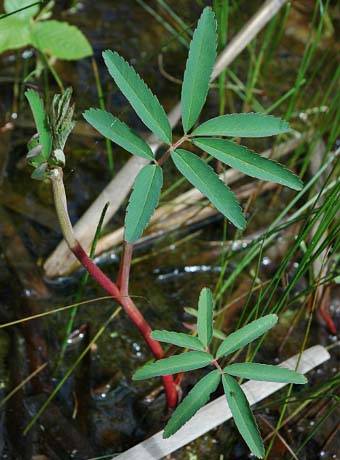
Potentilla palustris - marsh cinquefoil (new name Comarum palustre)
Ros-aceae
Aquatic herb often growing out of shallow water; ֎pinnately compound ֎leaves toothed (marijuana-like), 5-7 leaflets; flowers erect, purple with petals pointed; flooded meadows, bogs.
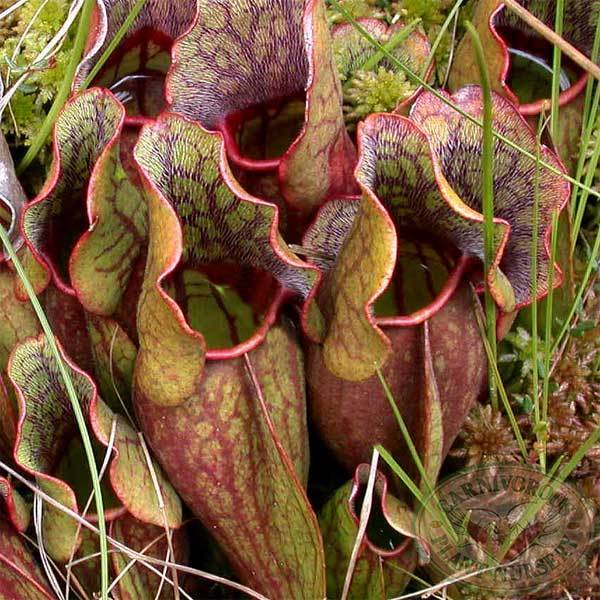
Sarracenia purpurea - pitcher plant
Sarraceni-aceae
֎Carnivorous herb 8-24”; leaves ֎pitcher-like, heavily veined, red or green, usually half filled with water, the flaring lips are lined with downward bristles to trap insects; flowers dull red, nodding, on separate stalk, with a large flattened pistil; bogs.
Monocot (Herbaceous)
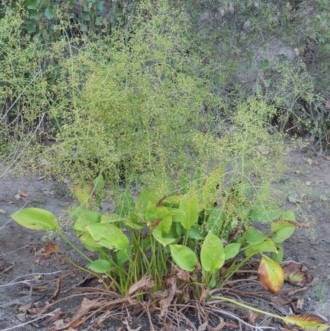
Alisma sp. – water plantain
Alismat-aceae
Aquatic herb; strong rosette, leaves ֎not lobed with broad flat blades which may be rounded or tapered at base; nutlets in a ring; flowers and fruit stems on a naked stem which is usually rigid and forming a
֎massive panicle; may be mostly submersed (the leaves), shores, ponds, shallow marshes.
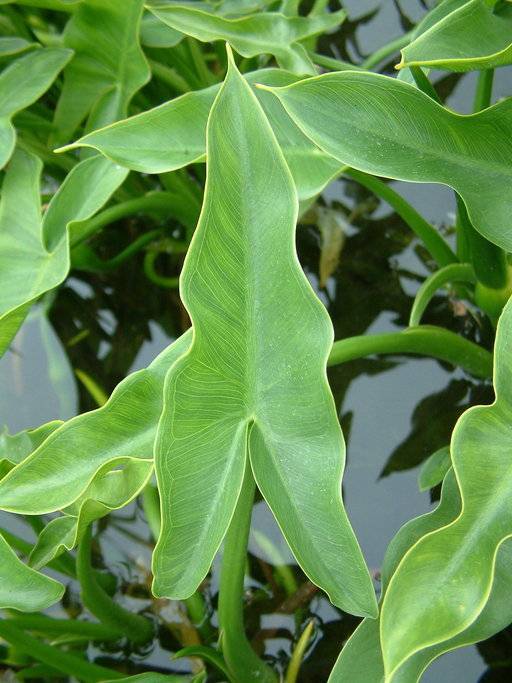
Peltandra (virginica) – arrow arum
Ar-aceae
Aquatic herb, strong rosette; leaves lobed at base (typically sagittate), each basal lobe with a heavy central vein, 3-nerved,with a small ֎veins that run along the entire leaf margin (like a child traced the leaf); spathe green, fleshy, in-rolled; herbs growing on muddy shores and shallow water.
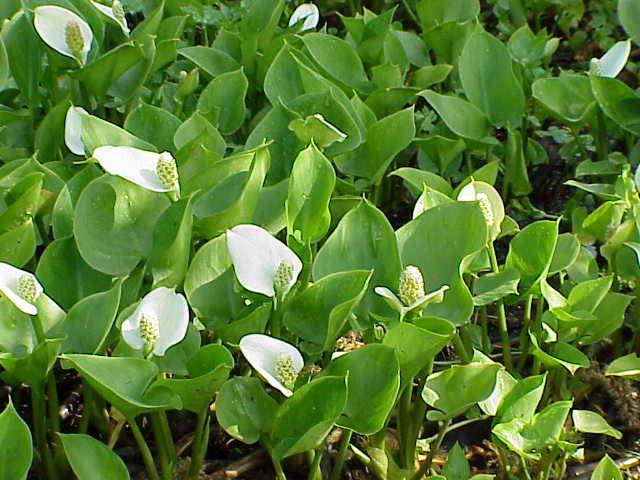
Calla (palustris) – water arum
Ar-aceae
Aquatic herb; ֎leaves broadly heart shaped, abruptly tapered at tip; inflorescence a short cylindrical spadix; spadix shorter than spathe; ֎spathe white, funnel shaped surrounding spadix; shallow water, bog pools, wet shorelines; overwinters via rhizome.
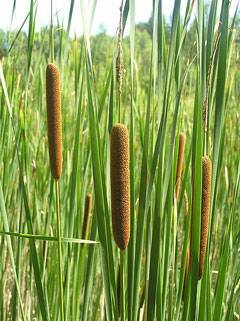
Typha sp. - cattail
Typh-aceae
Large emergent herb (generally growing out of shallow water); the two species listed below can produce hybrids so that identification can be difficult; in this class, when given two species the difference will be obvious between the two. Both have ֎long skinny leaves that originate from the same point (round base unlike iris which is fan shaped at the base) and ֎corn-dog looking inflorescences. Flowers small and unisexual, arranged into close cylindrical spikes which consist of an upper region of staminate (male) flowers and a lower region of pistillate (female) flowers in a dark brown spike (the male flower falls off after pollination). The pollen can be harvested and is flour like. The hybrid is generally invasive and can take over large areas.
Typha angustifolia - narrow-leaved cattail
֎Leaves long thin and ribbon-like, 3-8mm wide; stem is slender, underground stems spread rapidly; ֎staminate and pistillate portions are usually divided by at least 5mm.
Typha latifolia - broad-leaved cattail
֎Leaves flat, thick and wide, 6-15mm wide; stems stout, underground stems spread rapidly; ֎staminate and pistillate portions are usually contiguous.
Graminoid (Herbaceous monocot)
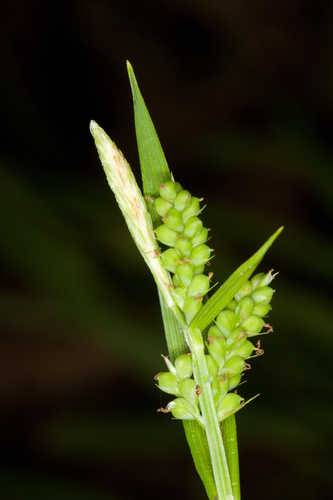
Carex sp. – carex
Cyper-aceae
Extremely diverse sedge; nutlet enclosed in a ֎perigynium (sack-like structure unique to carex); stamens and pistils in separate flowers; staminate and pistillate flowers may be in separate spikes, in different parts of the same spike or scattered and scarcely distinguishable in each spike. The most diverse plant genus with more than 100 species in West Michigan.
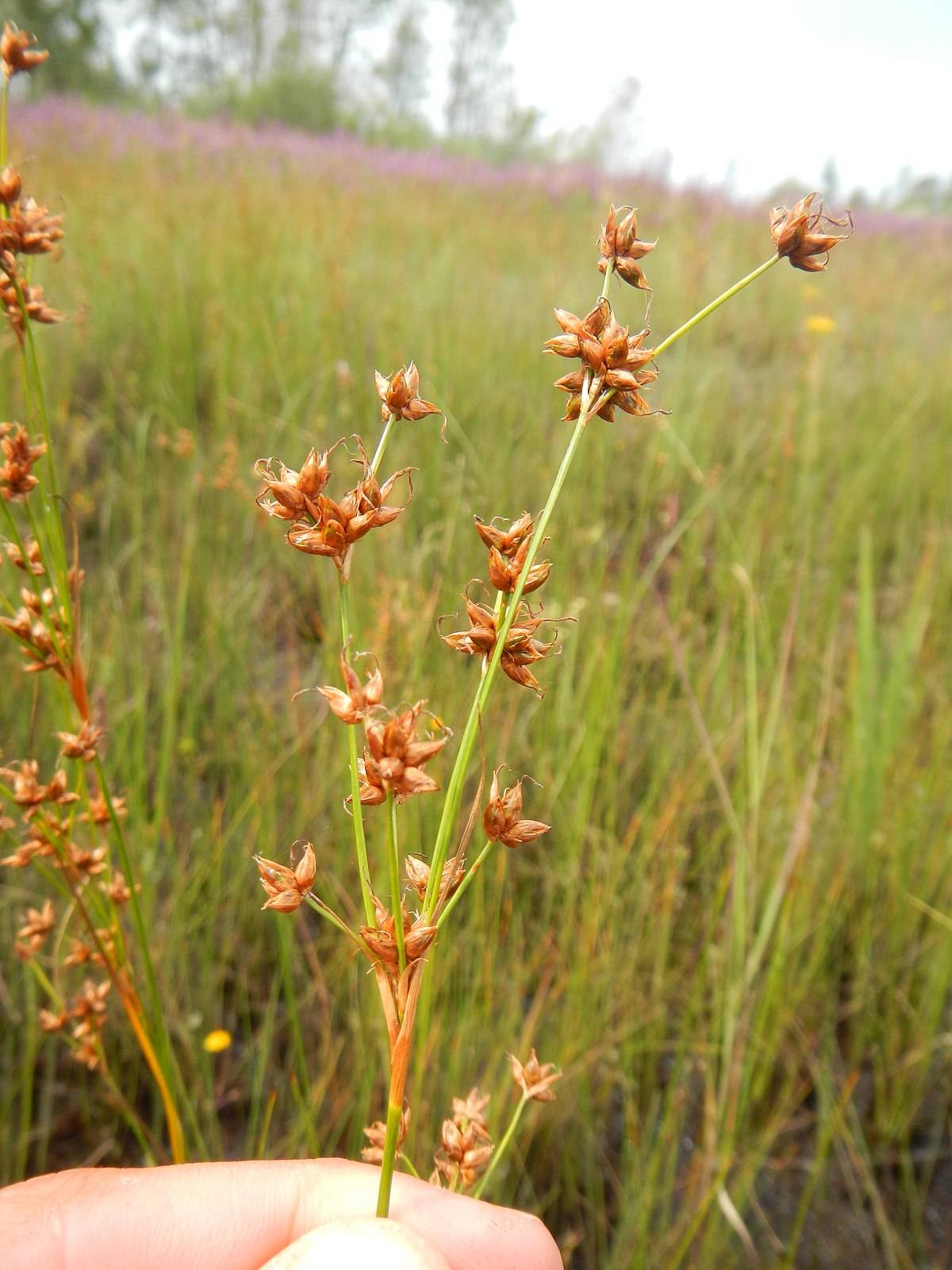
Cladium (mariscoides) – twig rush
Cyper-aceae
Large coarse sedge 0.5-1m; stems leafy, topped by a branched inflorescence with a cluster of spikelets at each branch (typical sedge appearance with multiple cone-shaped spikelets directly clumped together); spikelets are reddish-brown, nutlet without a tubercle; ֎1 large achene/nutlet per spikelet; common in peat rich soils.

Dulichium (arundinaceum) – three way sedge
Cyper-aceae
Sedge often found in large colonies; resembles a three spoked airplane propeller when viewed from above stems stout, erect, hollow, and strongly jointed; leaves flat, short and ֎strongly three ranked, reduced to bladeless sheaths on lower stem; ֎flowers from leaf axils, brownish clusters of ֎spikelets in two vertical rows (flat) with three stamens and a two branched style with lance shaped scales; fruit is a beaked achene with barbed bristles at base; July-September; marshes, pond margins and fens.
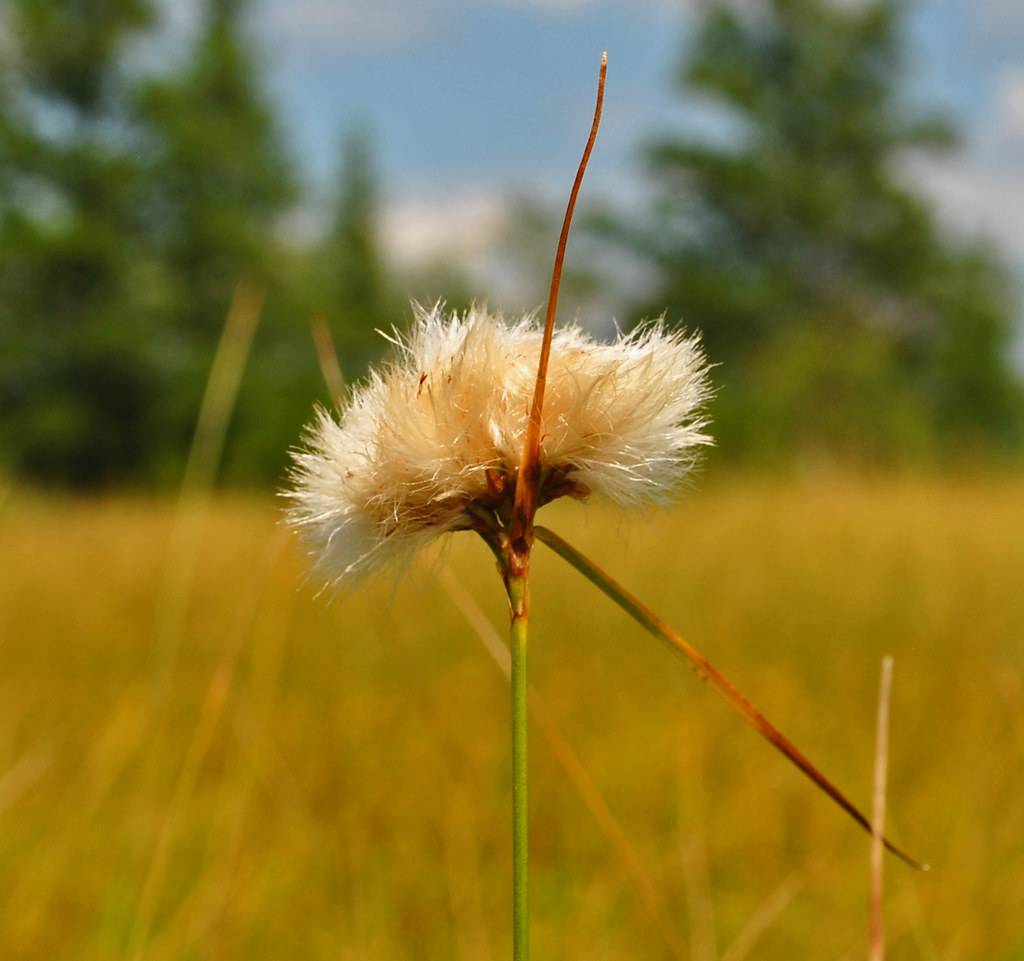
Eriophorum sp. – cotton grass
Cyper-aceae
Poufy white sedge; stems clumped or more commonly singled, rounded; leaves few and generally at base of plant, folded or in rolled usually reduced to bladeless sheath; flower heads at terminal end of stems with one or many spikelets, spirally arranged with chaffy margins; many scales; perianth reduced to abundant ֎long, cottony, white to tawny brown bristles; stamen 3, styles 3-parted; fruit is an achene generally brown and three angled sometimes with a short beak; May-August. Bogs; wet meadows, wet areas.
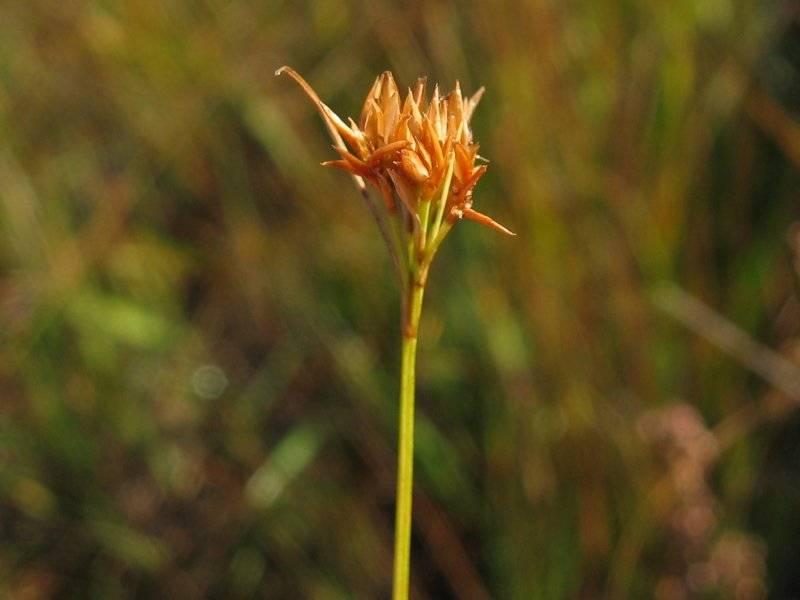
Rhynchospora sp. – beak-rush
Cyper-aceae
Sedge typically found in peatlands; leaves flat or inwardly rolled, reduced; stems erect and leafy usually 3-angled but occasionally round; spikelets clustered in flat-top like heads, the heads open to crowded (֎often kaki colored and resembling a fancy paint brush); scales spirally arranged; flowers perfect and bisexual, sepals and petals reduced to usually six bristles; fruit is an achene (lens shaped) with a ֎tubercle with downward barbed bristles at base; only ֎one to three achenes per spikelet.
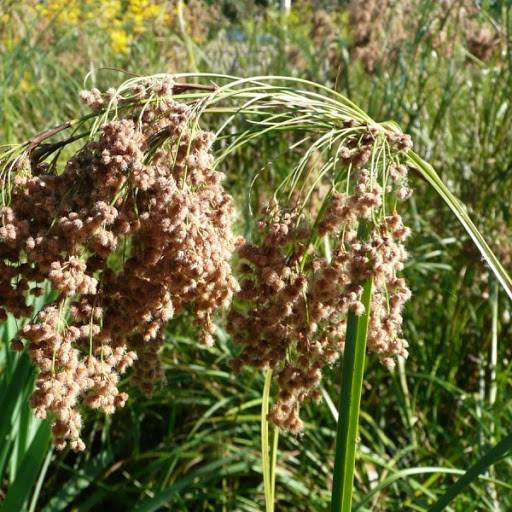
Scirpus cyperinus – wool grass
Cyper-aceae
Large sedge 0.5-1m; spikelets terminal ֎like a fountain spray of wool puff ball due to long bristles on achenes; involucels (bracts at the base of spikelets) dull brown with blackish bases; common in wet meadows, shores, very shallow marshes, riverbanks.
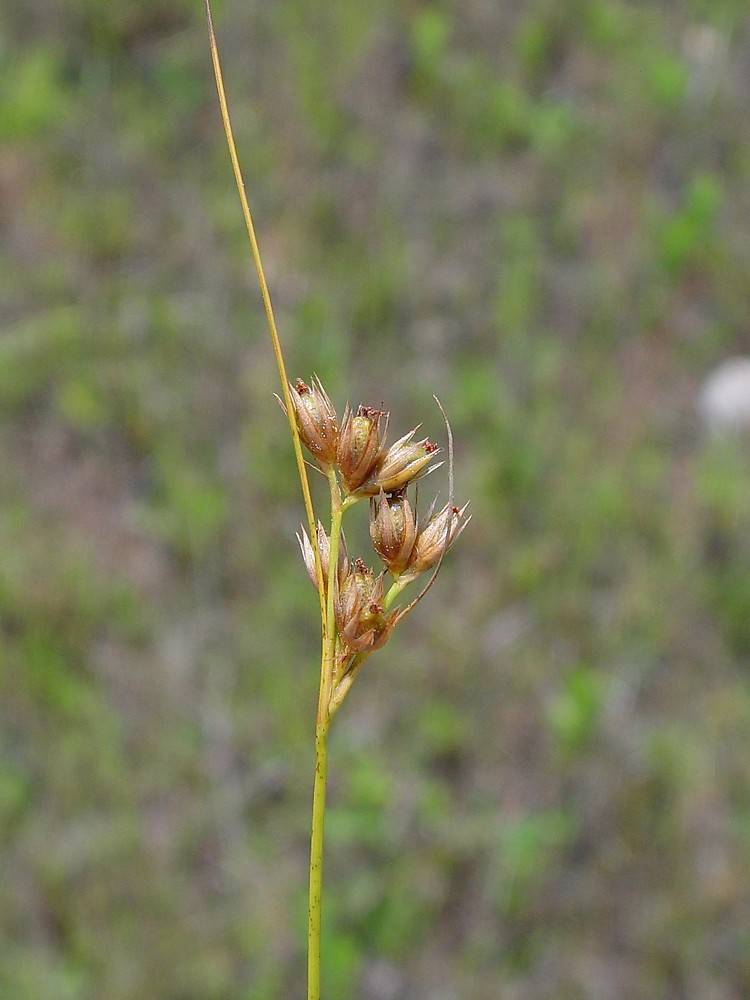
Juncus sp. – rush
Junc-aceae
Looks similar to grass or sedge, however flowers resemble a lily (3 sepals, 3 petals,3 or 6 stamens and a capsule), have a true perianth (֎6 tepals); no ligule at junction of blade and sheath like the grass leaf; diverse typically more common in wet habitats although some species in dry areas.
|
Aquatic -herbaceous floating or submerged |
|---|
|
Dicot |
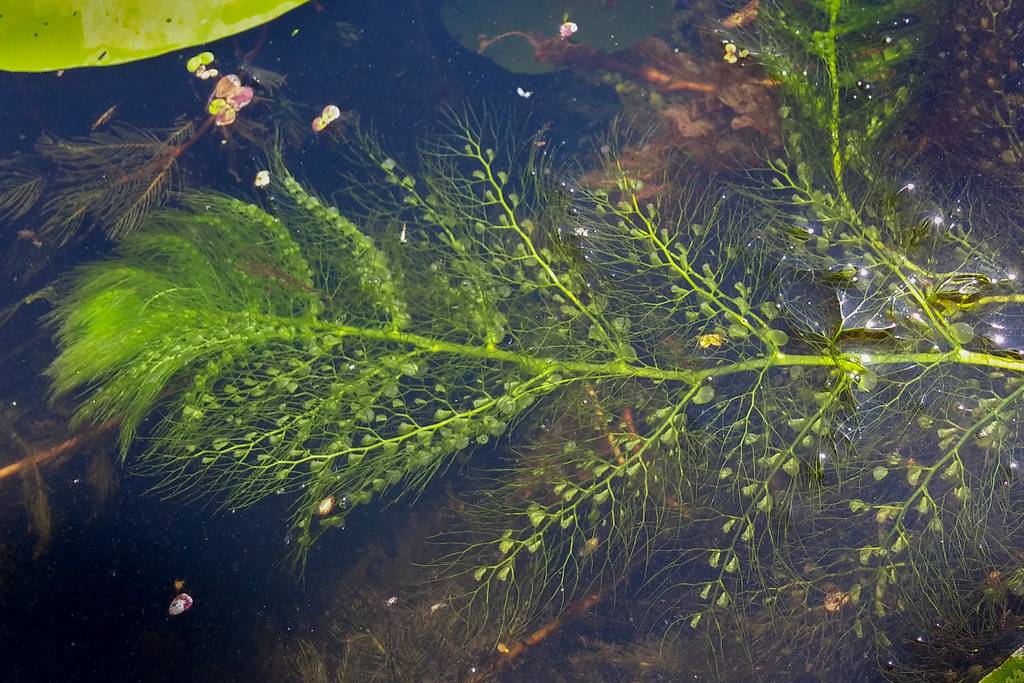
Utricularia sp. – bladderwort
Lentibulari-aceae
Aquatic herb usually submerged and floating near the surface; leaves filament-like, branched submerged in mud or floating horizontally in shallow water usually with ֎tiny bladders (to catch small animal life); flowering stalk several inches tall, flower zygomorphic with two lips and a spur, mostly yellow; fruit a pod; shallow marshes, muddy shore. There are many species in West Michigan associated with very low nutrients (hence carnivorous), but Utricularia vulgaris is commonly found in nutrient rich waters.
|
Vine -herbaceous or woody |
|---|
|
Dicot |
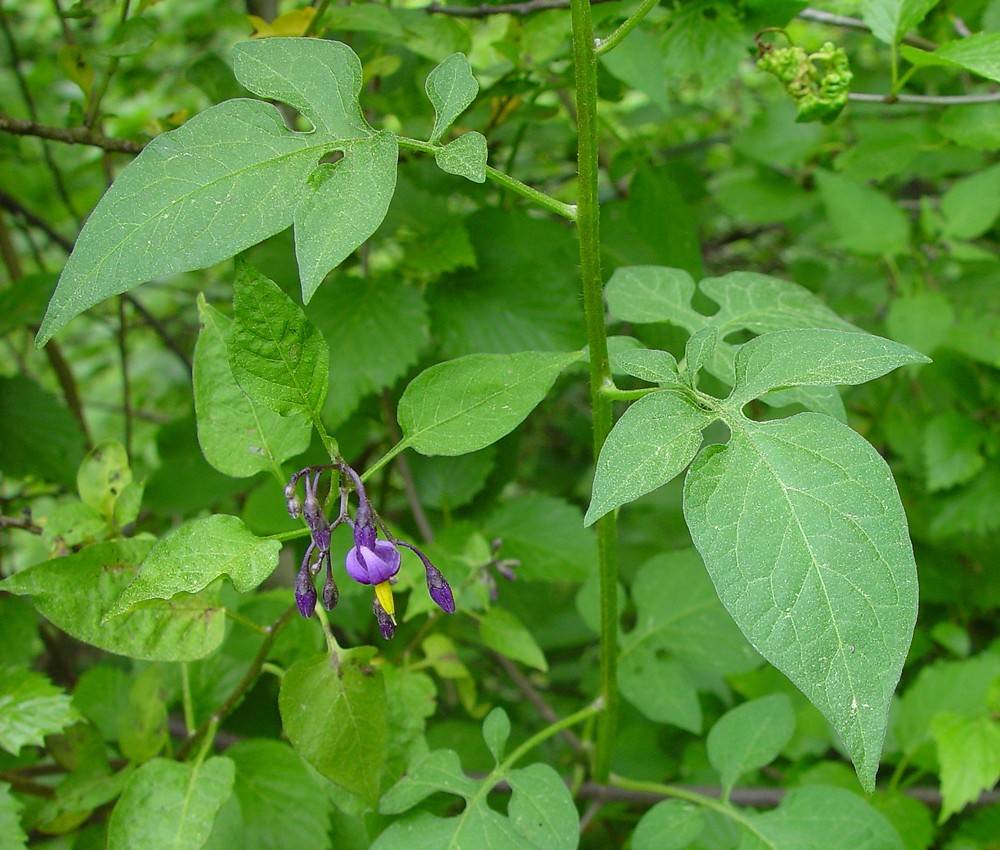
Solanum dulcamara - nightshade
Solan-aceae
Herbaceous vine; leaves heart-shaped and lobed; often with deep lobes form ֎spade-like appearance; flowers purple or blue; ֎berries red (poisonous); moist soil, wet meadow, swales, stream banks, bogs.
|
Shrub -woody |
|---|
|
Dicot |
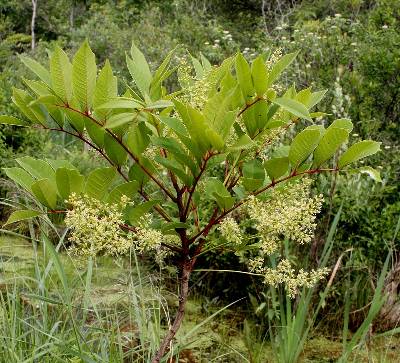
Toxicodendron vernix – poison sumac
Anacardi-aceae
Upright shrub or small tree up to 18’; leaves ֎alternate, ֎pinnately compound 6-12” long with 7-13 leaflets; twigs stout; flowers June; fruit is a cluster of white berries (drupe), Sept.; swamps, bogs.
Causes allergic reaction.

Ilex verticillata – Michigan holly
Aquifoli-aceae
Deciduous shrub; leaves alternate, ֎acuminate at tip with numerous fine teeth along margins; dioecious flowers with white petals in late June-early July; ֎fruit a bright red berry (drupe); bogs, swamps, thickets, damp shores, swales, lake and stream margins.
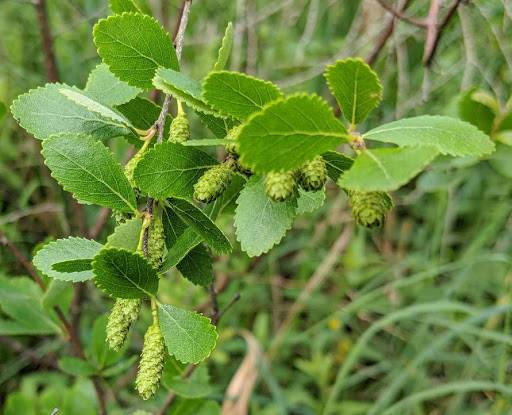
Betula pumila – dwarf birch
Betul-aceae
Shrub up to 9’ high; bark smooth, reddish brown, lenticels prominent; leaves alternate, simple, 1-5cm long, ֎almost round with serrated margins; flowers on separate pendulous catkins ; fruit a samara; bogs, open swamps, fens.
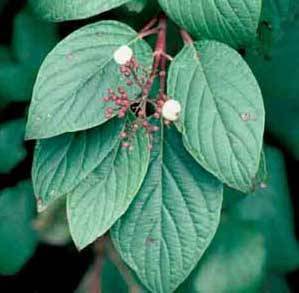
Cornus sp. – dogwood
Corn-aceae
Shrub or small tree; entire leaves usually opposite; ֎leaf veins follow the smooth leaf edges toward the tips; ֎silky sap apparent between veins when leaves are gently broken; twigs often reddish or purple; leaf buds with only 1 pair of scales; flowers 4 petaled with greatly reduced or no calyx, some species with showy bracts; typically very hard wood.
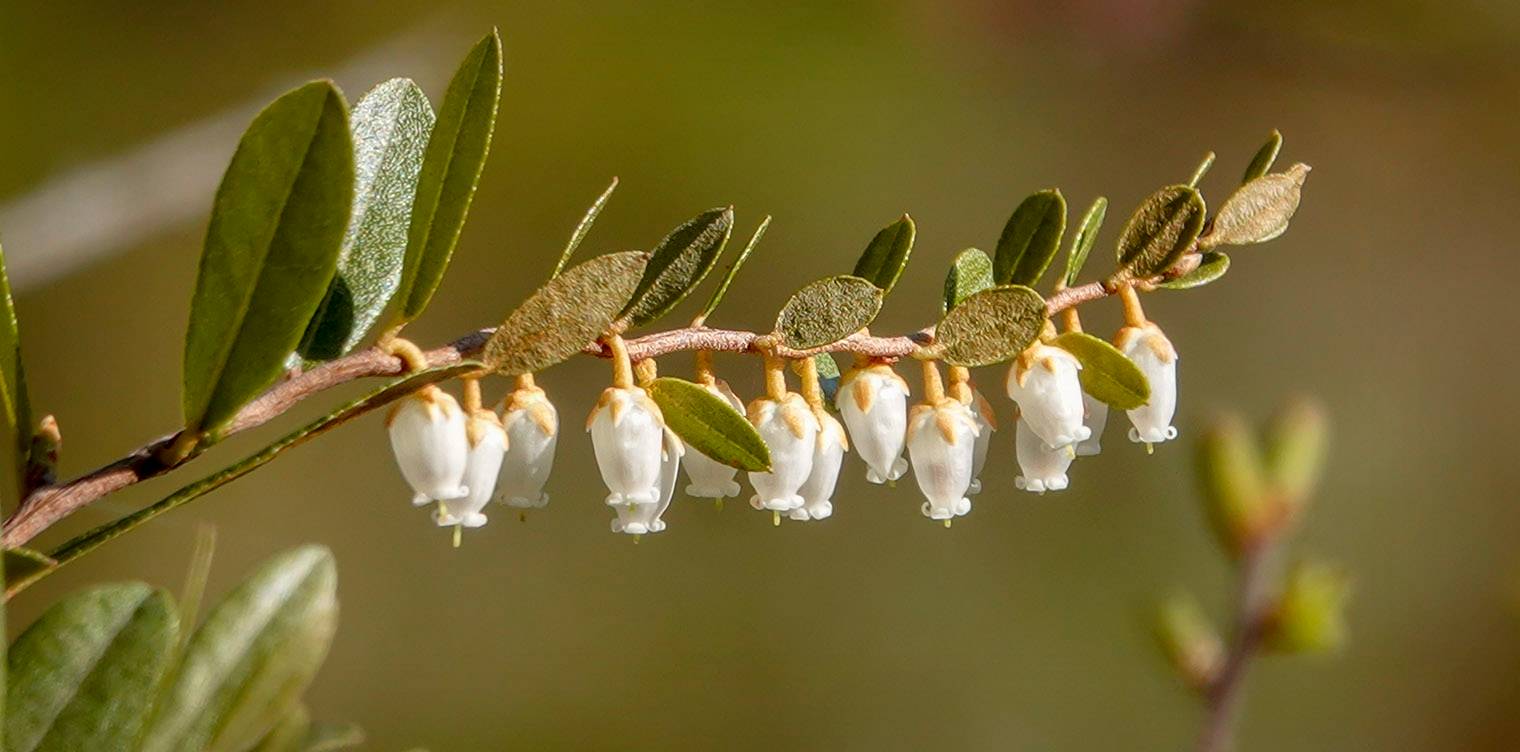
Chamaedaphne (calyculata) – leatherleaf
Eric-aceae
Evergreen shrub up to 4’; ֎leaves 1-2” long progressively becoming smaller toward the branch apex, ֎leathery, narrow to elliptic, toothless, evergreen, ֎brown scales appear as dots; flowers small, axillary, white bell-like, in clusters in angles of upper leaves. Common in the transition zone between open and closed portions of a bog.
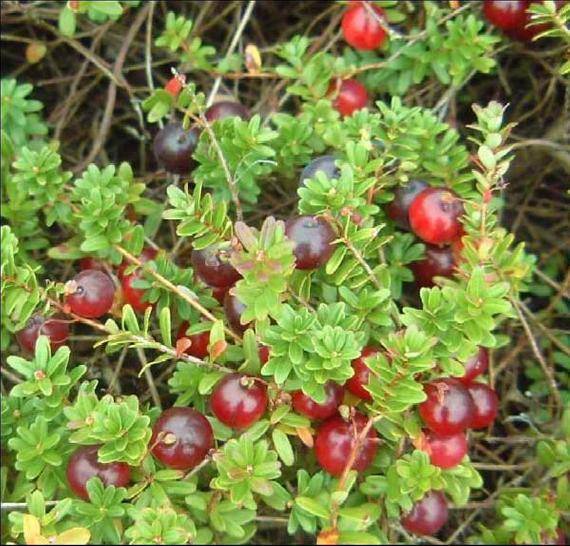
Vaccinium macrocarpon – large cranberry
Eric-aceae
֎Trailing evergreen shrub with slender stems (vine like); leaves wedge-shaped to round, ֎blunt-tipped, 1/4”-5/8”; flowers pink, solitary in axils; ֎fruits red; bogs.
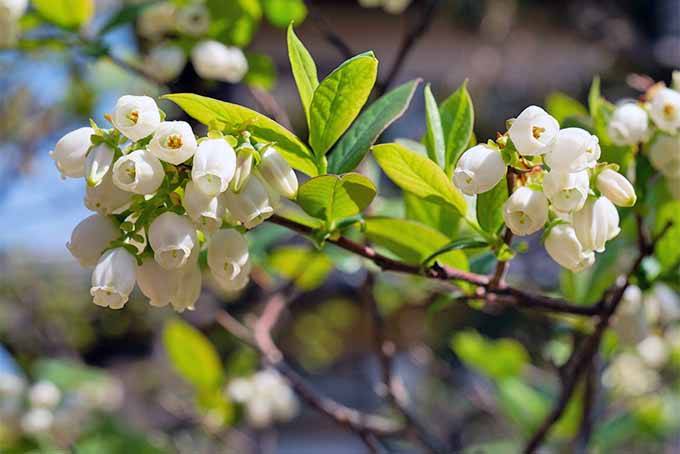
Vaccinium sp. – blueberry
Eric-aceae
Small to large shrub; flowers ֎bell-shaped white; ֎leaves deciduous; fruit ֎blue-purple berry. There are several species that vary greatly in size and shape but all produce edible and delicious blueberries.
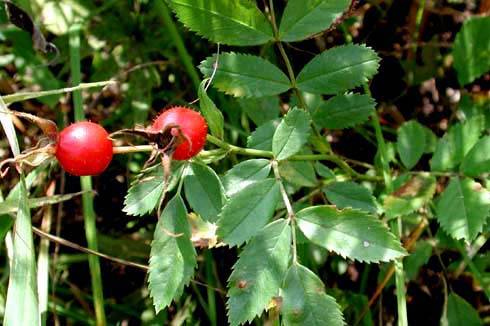
Rosa palustris - marsh rose
Ros-aceae
Highly branching prickly shrub; leaves with ֎stipules, alternate and ֎pinnately divided into usually seven leaflets; leaflets ֎fine toothed margins; twigs red-brown with ֎paired ֎downward curved ֎deciduous -prickles; ֎flowers single at terminal end of branches, strong ֎hypanthium; fruit round and reddish orange (edible ֎rose-hips) often with 5 sepals remaining; July-August; high prevalence in disturbed wetlands, moist to wet areas, open bogs.
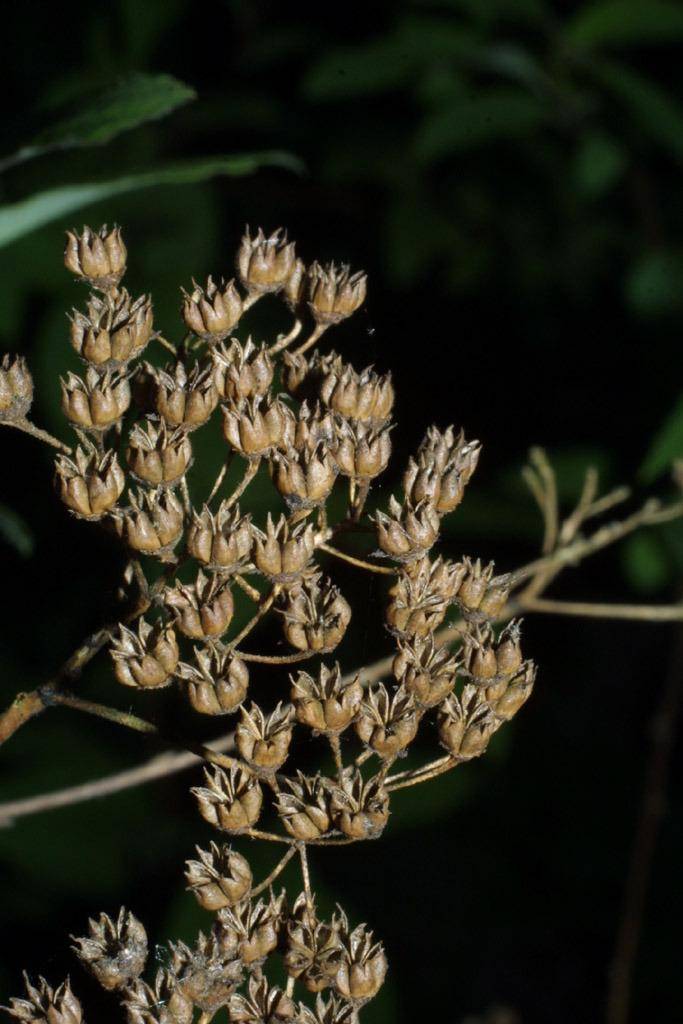
Spirea sp. - spirea
Ros-aceae
Shrubs with slender wand-like twigs, narrow based and ֎mostly toothed leaves, lacking stipules, papery bark that often flakes off, and raised leaf scars with only 1 bundle scar; clusters of tiny dry ֎5 parted fruits often are present at twig tips following white or pink flowers; ֎stamen numerous and ֎often longer than petals.
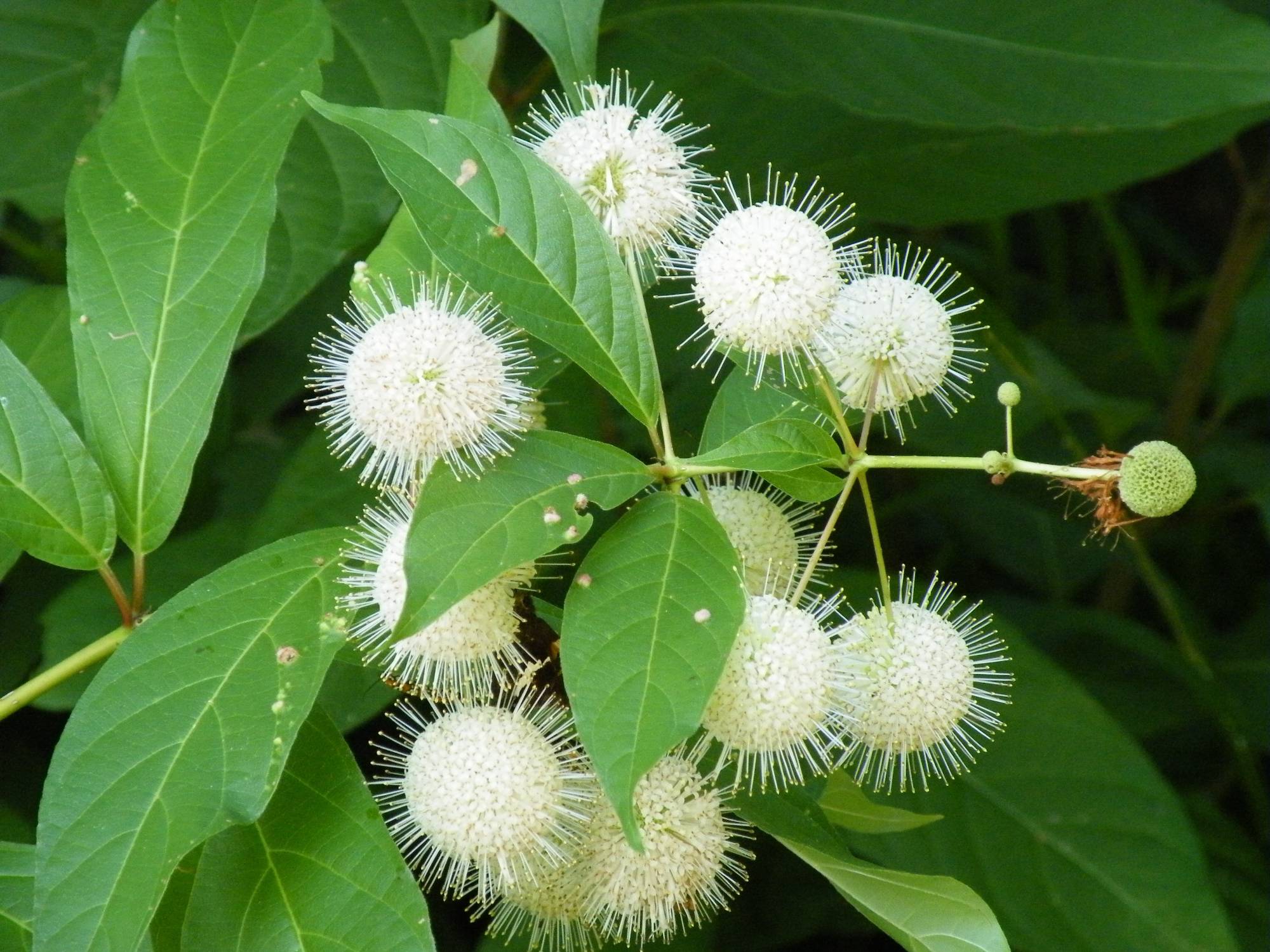
Cephalanthus occidentalis - buttonbush
Rubi-aceae
Medium shrub; ֎leaves opposite or whorls of 3, 2-3” long, waxy and thick, elliptic, sharp pointed; flowers in ֎spherical ball-like heads at the end of a long stalk in the axils of the upper leaves, whitish in color; shallow marshes and ponds, scrub/shrub, floodplains along streams.
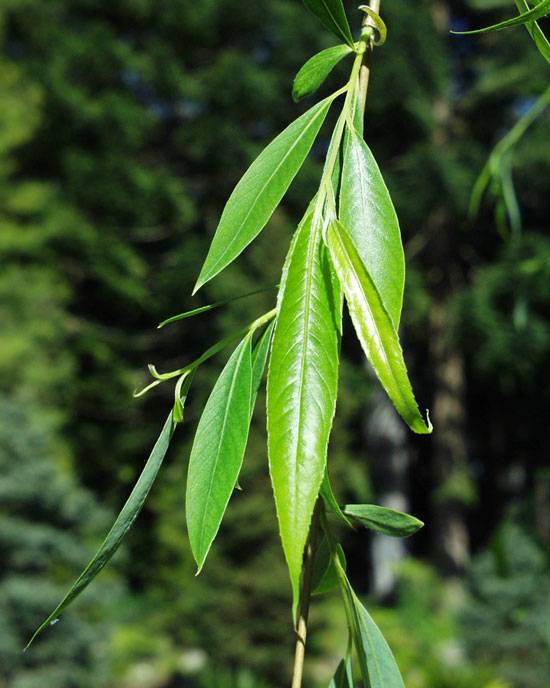
Salix sp. - willow
Salic-aceae
Shurbs and trees; often difficult to identify to species; ֎leaves alternate, usually lanceolate, ֎typically long and narrow; ֎flowers arranged in catkins; characteristic of stream-banks and moist conditions, floodplains, pond edges, shores; young branches commonly fall and make new individuals. Salicylic acid (aspirin) in the bark of nearly all species throughout the world, you can chew on a young twig (eating large dry bark is undesirable and less effective).
|
Tree -woody |
|---|
|
Gymnosperm |
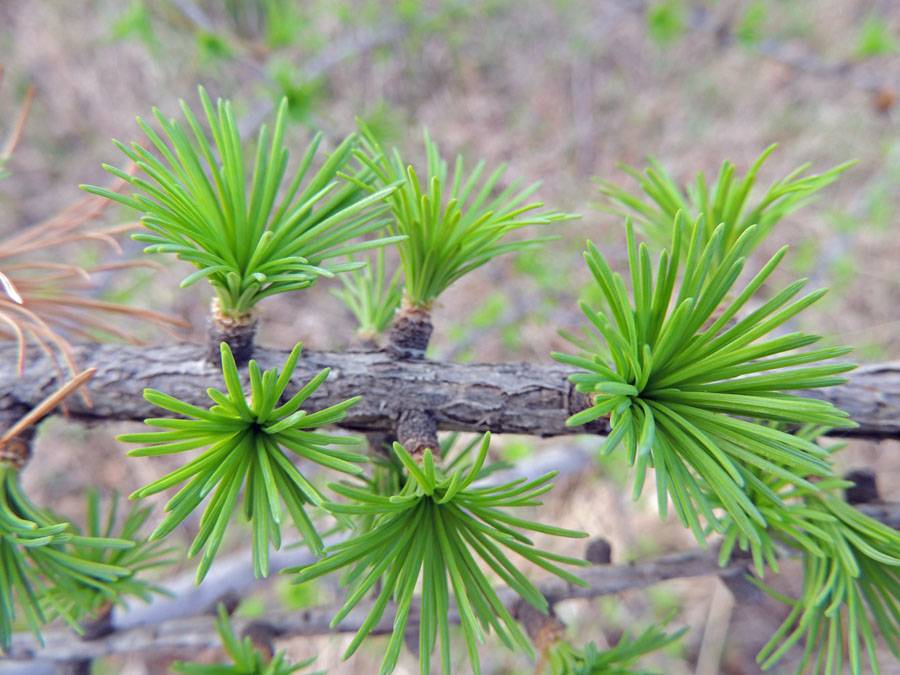
Larix laricina - tamarack
Pin-aceae
֎Deciduous conifer tree 40-80’; needles slender, numerous to 1” long on short spurs, ֎forming circular or ring like structures; needles single on longer shoots; cones 1/2” long; bark is dark, flakes off on small scales; bogs.
|
Tree -woody |
|---|
|
Dicot |
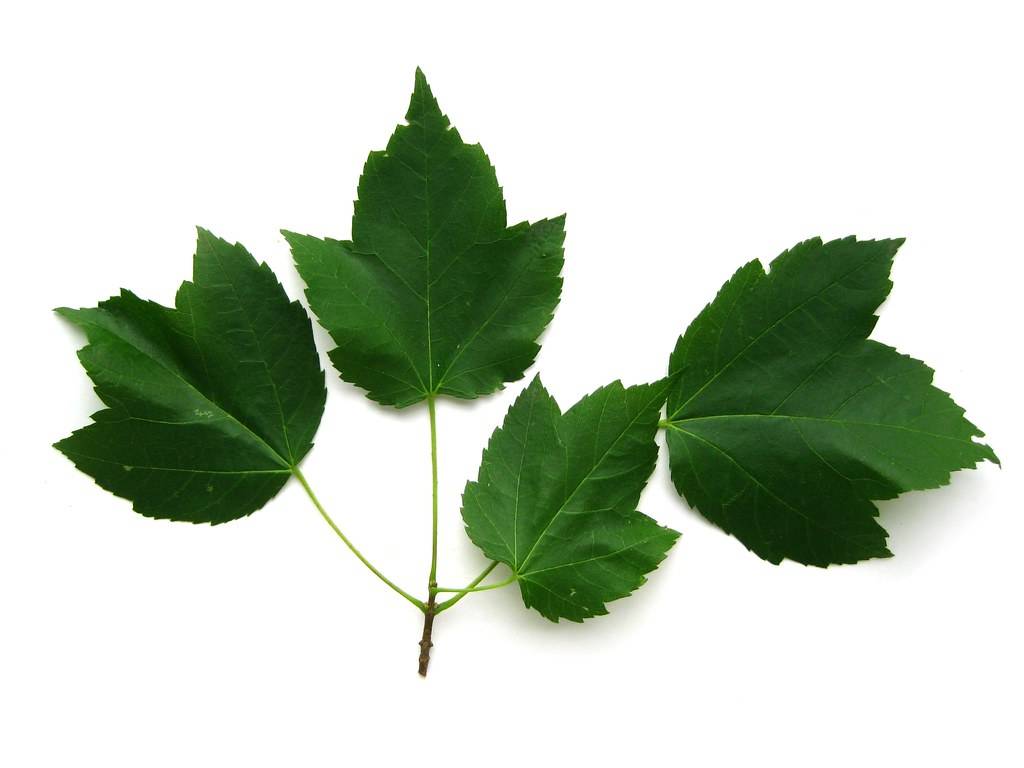
Acer rubrum – red maple
Acer-aceae (֎palmately lobed with irregular teeth ֎opposite ֎winged-paired seeds new name Sapind-aceae)
Medium tree 20-60’; leaves ֎opposite 3-5 lobed, ֎toothed, base of terminal lobe wide; twigs and buds reddish; flowers red in spring; lowland, poorly drained deciduous swamps, moist soil, bogs, floodplains, river banks.
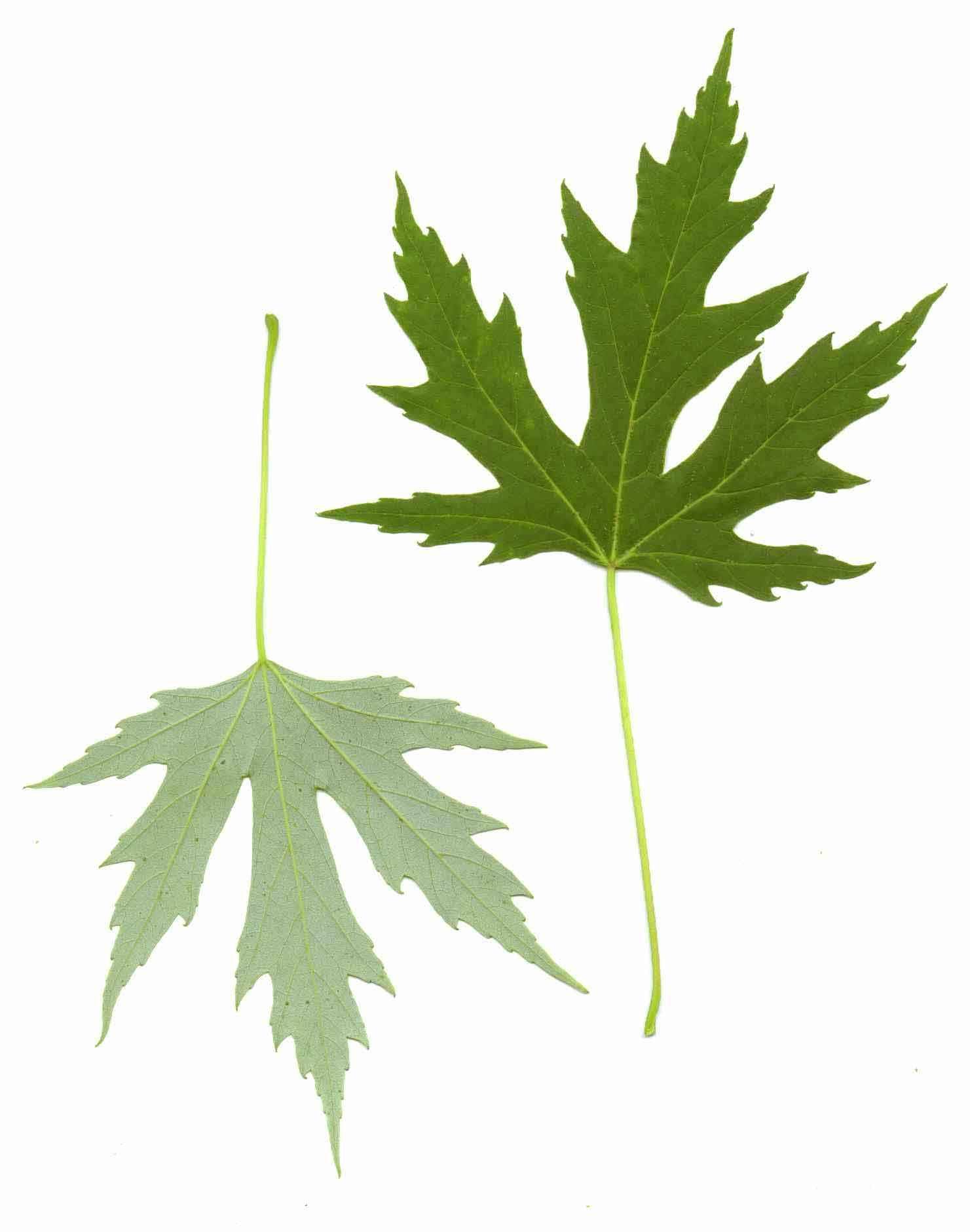
Acer saccharinum – silver maple
Acer-aceae (new name Sapind-aceae)
Tall tree 40-60’; leaves ֎opposite ֎very deeply lobed (3-5), slightly silver/whitish on lower surface; twigs and buds reddish; moist soils, stream-banks, floodplain.
